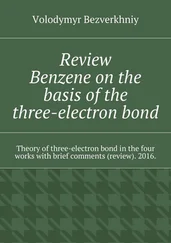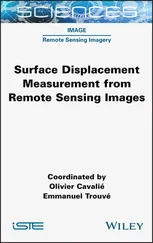Remote C-H Bond Functionalizations
Здесь есть возможность читать онлайн «Remote C-H Bond Functionalizations» — ознакомительный отрывок электронной книги совершенно бесплатно, а после прочтения отрывка купить полную версию. В некоторых случаях можно слушать аудио, скачать через торрент в формате fb2 и присутствует краткое содержание. Жанр: unrecognised, на английском языке. Описание произведения, (предисловие) а так же отзывы посетителей доступны на портале библиотеки ЛибКат.
- Название:Remote C-H Bond Functionalizations
- Автор:
- Жанр:
- Год:неизвестен
- ISBN:нет данных
- Рейтинг книги:3 / 5. Голосов: 1
-
Избранное:Добавить в избранное
- Отзывы:
-
Ваша оценка:
- 60
- 1
- 2
- 3
- 4
- 5
Remote C-H Bond Functionalizations: краткое содержание, описание и аннотация
Предлагаем к чтению аннотацию, описание, краткое содержание или предисловие (зависит от того, что написал сам автор книги «Remote C-H Bond Functionalizations»). Если вы не нашли необходимую информацию о книге — напишите в комментариях, мы постараемся отыскать её.
Remote C—H Bond Functionalizations
Remote C—H Bond Functionalizations
Remote C-H Bond Functionalizations — читать онлайн ознакомительный отрывок
Ниже представлен текст книги, разбитый по страницам. Система сохранения места последней прочитанной страницы, позволяет с удобством читать онлайн бесплатно книгу «Remote C-H Bond Functionalizations», без необходимости каждый раз заново искать на чём Вы остановились. Поставьте закладку, и сможете в любой момент перейти на страницу, на которой закончили чтение.
Интервал:
Закладка:
Chapter 9deals with heterocycle functionalizations at unusual positions. Heterocycles are prevalent structural core in pharmaceuticals, natural products, and agrochemicals. Regioselective C–H functionalization of heterocycles is of paramount importance as the derivatization of these heterocyclic cores can alter their inherent properties. However, C–H functionalizations of hetero‐arenes are predominantly achieved at electronically biased positions. Therefore, standing against the innate inertness to attain selective C–H functionalization at unusual positions is of paramount importance in order to enrich the repertoire of heterocyclic compounds. The ever‐expanding inquisitive minds have dedicated their efforts in finding and devising suitable methodology to promote site selective C–H functionalization of apparently inert C  H bonds present in heteroarenes. Hirano and Miura have elucidated these recent reports in Chapter 9. Recent progress on C–H functionalization of important heterocycles, namely, indole, (benzo)thiazole, pyrrole, pyridine, quinoline, and others is concisely recapitulated in Chapter 9.
H bonds present in heteroarenes. Hirano and Miura have elucidated these recent reports in Chapter 9. Recent progress on C–H functionalization of important heterocycles, namely, indole, (benzo)thiazole, pyrrole, pyridine, quinoline, and others is concisely recapitulated in Chapter 9.
Unlike arene C(sp 2)–H functionalization, aliphatic C(sp 3)–H functionalization is relatively challenging due to its inherent inertness, low acidity, and overabundance with flexible long chain. Additionally, control over stereoselectivity is another important aspect to take care. Although functionalization of acidic C  H bonds adjacent to electron‐withdrawing functional group or allylic and benzylic C
H bonds adjacent to electron‐withdrawing functional group or allylic and benzylic C  H bonds was exploited with electrophile, reciprocating such reactivity is impossible for remote C–H functionalization of long chain aliphatic substrates. However, the assistance from directing group enabled the delivery of functional groups at a desired position with uncompromised yield and selectivity. A vivid exemplification about the recent reports on directing group assisted remote functionalization of aliphatic substrates was presented by Li, Zhang, and Shi in Chapter 10.
H bonds was exploited with electrophile, reciprocating such reactivity is impossible for remote C–H functionalization of long chain aliphatic substrates. However, the assistance from directing group enabled the delivery of functional groups at a desired position with uncompromised yield and selectivity. A vivid exemplification about the recent reports on directing group assisted remote functionalization of aliphatic substrates was presented by Li, Zhang, and Shi in Chapter 10.
Chapter 11by Li and Zhu articulates the recent progresses on radical initiated distal C(sp 3)–H functionalizations. Intramolecular hydrogen atom transfer process has provided a synthetically useful tool to promote regioselective functionalization of aliphatic substrates. Hofmann–Loffler–Freytag (HLF) reaction was considered as the pioneering invention in this realm. Although the potential of this strategy was realized lately in 2010, when a rapid growth was witnessed to promote radical initiated distal aliphatic functionalization via hydrogen atom transfer. In Chapter 11, comprehensive summary on different methods, synthetic applicability, and mechanistic intricacies are discussed from 2010 onwards.
Chapter 12is devoted in discussing non‐directed functionalizations of aliphatic compounds, governed by innate reactivity. Although several challenges associated with the site selective functionalization of aliphatic substrates, constant up‐search in finding suitable protocols either by tuning the innate reactivity of particular C  H bond present in the substrate or by controlling the reagent and catalyst has led to revolutionize the modern era of aliphatic C–H functionalization. Sambiagio and Maes have summarized the recent progress on non‐directed aliphatic C–H functionalization at the remote position. Although a major part of aliphatic C–H activation was accomplished by directing group assisted strategy, Chapter 12includes only non‐directed aspect of aliphatic distal C–H functionalization. Chapter 12was broadly divided into two parts: (i) the reaction involving distinct formation of metal–carbon bond and (ii) the reactions occurring without the metal–carbon bond formation.
H bond present in the substrate or by controlling the reagent and catalyst has led to revolutionize the modern era of aliphatic C–H functionalization. Sambiagio and Maes have summarized the recent progress on non‐directed aliphatic C–H functionalization at the remote position. Although a major part of aliphatic C–H activation was accomplished by directing group assisted strategy, Chapter 12includes only non‐directed aspect of aliphatic distal C–H functionalization. Chapter 12was broadly divided into two parts: (i) the reaction involving distinct formation of metal–carbon bond and (ii) the reactions occurring without the metal–carbon bond formation.
While the sojourn through transition metal‐catalyzed distal C–H functionalization goes on in Chapters 2–12, in Chapter 13, Costas introduces to the territory of remote aliphatic C–H oxidation by bioinspired catalysis. Selective C–H oxidation is a routine task in biological system. The selectivity in enzymatic process is governed by the virtue of several interactions that enable the proper substrate trajectory and geometric orientation. Imitating such reactivity in laboratory synthesis is relatively challenging yet worthy to explore. Therefore, a persistent attempt to comprehend the mechanistic insight of biological reactivity and catalyst or ligand design was pronounced to furnish site selective functionalization of aliphatic substrate. A comprehensive survey on aliphatic C–H oxidation imparted by the bio‐inspired catalysis is outlined by Costas in Chapter 13.
The endless curiosities of human mind are the key to the technological advancements and evolution. This eternal truth has remained the essence for every piece of advancement since ancient times and will continue to remain persistent till times eternity. Modernization of scientific research in organic chemistry genre has shaped up in the form of C–H activation based protocols that has fostered a novel dimension in synthetic prospects and restructured the temperament of the scientific fraternity accordingly. This book besides providing a comprehensive scenario on the field of distal C–H activation also aims to inculcate cognizance among researchers of present and future generations to streamline and channelize their scientific understanding for the welfare of human civilization.
2 Transition Metal‐Catalyzed Remote meta ‐C–H Functionalization of Arenes Assisted by meta ‐Directing Templates
Yuzhen Gaoand Gang Li
State Key Laboratory of Structural Chemistry, Fujian Institute of Research on the Structure of Matter, Chinese Academy of Sciences (CAS), 155 West Yang‐Qiao Road, Fuzhou, Fujian, 350002, China
2.1 Introduction
Site‐selective C–H functionalization has emerged as an important synthetic methodology in organic synthesis in the past two decades [1–10]. For such synthetic methodology to be synthetically useful, precise control of the site‐selectivity of C–H functionalization reactions is one of the most important issues required to be resolved due to the presence of several C  H bonds with similar reactivity in an organic molecule. Notably, meta ‐selectivity in C–H functionalization of arenes is one of the intriguing site selectivities that have been intensely studied in recent years [1–10]. Although thousands of methods for ortho ‐C–H functionalizations of arenes via proximity‐induced cyclometallation have been reported, only a limited number of approaches have been disclosed in meta ‐C–H functionalizations of arenes. One of the representative approaches of meta ‐C–H functionalization of arenes is the directing template assisted remote meta ‐C–H functionalizations of arenes via geometry‐induced metalation ( Scheme 2.1a) [5–10].
H bonds with similar reactivity in an organic molecule. Notably, meta ‐selectivity in C–H functionalization of arenes is one of the intriguing site selectivities that have been intensely studied in recent years [1–10]. Although thousands of methods for ortho ‐C–H functionalizations of arenes via proximity‐induced cyclometallation have been reported, only a limited number of approaches have been disclosed in meta ‐C–H functionalizations of arenes. One of the representative approaches of meta ‐C–H functionalization of arenes is the directing template assisted remote meta ‐C–H functionalizations of arenes via geometry‐induced metalation ( Scheme 2.1a) [5–10].
ortho ‐C–H functionalization has been usually promoted by σ‐chelation of the directing template. However, applying this chelation to meta‐ C–H functionalization is much more challenging since a strained cyclophane‐like metallacycle might be involved in this transformation [11]. In 2012, the group of Yu and coworkers disclosed the first geometry‐induced remote meta ‐C–H activation of toluenes and hydrocinnamic acids with a Pd(II) catalyst, which is assisted by two types of rationally designed nitrile‐based templates that are covalently linked with toluenes or hydrocinnamic acids through an ether or amide bond ( Scheme 2.1b) [11]. The presumable linear coordination mode of the nitrile‐based chelating functionality (CF) in the U‐shaped template that weakly coordinates to the palladium center in an end‐on fashion is important for securing a possible less strained cyclophane‐like pre‐transition state. However, a more likely catalytic scenario is the weakly chelating template may “catch and release” the Pd(II) catalyst closely to the target meta‐ C  H bond, leading to a high effective concentration of the Pd(II) catalyst at the target meta‐ C
H bond, leading to a high effective concentration of the Pd(II) catalyst at the target meta‐ C  H bond without forming an 11‐ or 12‐membered cyclophane‐like palladacycle.
H bond without forming an 11‐ or 12‐membered cyclophane‐like palladacycle.
Интервал:
Закладка:
Похожие книги на «Remote C-H Bond Functionalizations»
Представляем Вашему вниманию похожие книги на «Remote C-H Bond Functionalizations» списком для выбора. Мы отобрали схожую по названию и смыслу литературу в надежде предоставить читателям больше вариантов отыскать новые, интересные, ещё непрочитанные произведения.
Обсуждение, отзывы о книге «Remote C-H Bond Functionalizations» и просто собственные мнения читателей. Оставьте ваши комментарии, напишите, что Вы думаете о произведении, его смысле или главных героях. Укажите что конкретно понравилось, а что нет, и почему Вы так считаете.












